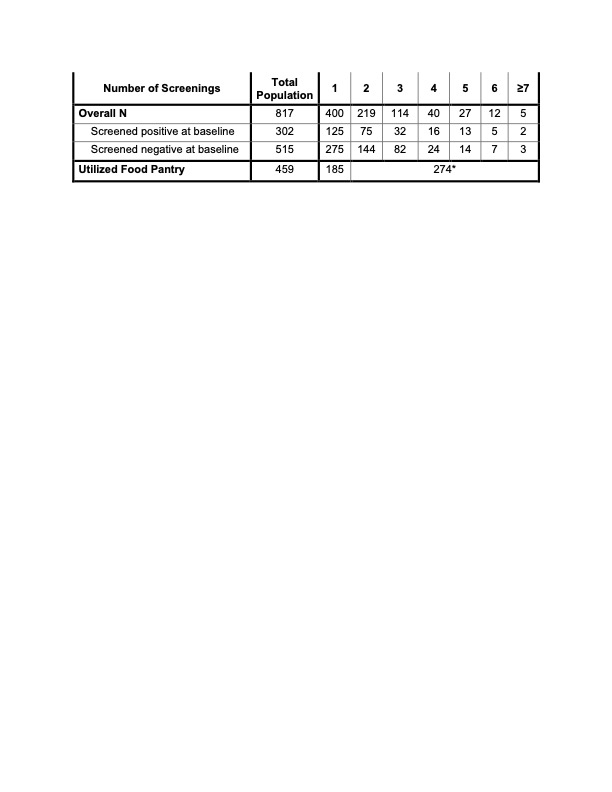Health Equity/Social Determinants of Health
Health Equity/Social Determinants of Health 6
653 - An Evaluation of Optimal Food Insecurity Screening Intervals in a Pediatric Weight Management Program
Publication Number: 653.317

Lilianna Suarez, MD, MPH
Medical Resident
Duke University
Duke University
Durham, North Carolina, United States
Presenting Author(s)
Background:
Food insecurity (FI) screening and intervention is increasingly common in pediatric clinical settings. FI is situational and may vary frequently depending on families changing socioeconomic conditions. While more frequent screening has been proposed, caregivers may experience stigma when faced with repeated screenings. The optimal frequency of FI screening that captures changes in families’ food situation has not been fully explored.
Objective:
To examine the FI screening interval that best captures changes in FI screening outcome.
Design/Methods:
From August 2020-July 2021, all patients in a pediatric weight management program underwent FI screening using the Hunger Vital Sign and were offered utilization of a clinic-based food pantry irrespective of screening outcome at each clinical visit. Chart review was conducted to collect patient characteristics of those with a completed screening. A logistic regression model was fitted with time from baseline FI screening as the only predictive variable and change in FI screening status as the outcome. The sensitivity and specificity were calculated for each potential screening timepoint (in months) from the baseline FI screening. The Youden’s index, a measure of prediction performance that considers both the sensitivity and specificity, was maximized to determine the optimal FI screening interval to capture change in FI status.
Results:
The cohort included 817 children and 1585 FI screenings, with 417 children screened at least twice (Table 1). Almost half of children (47.5%) were screened ≥3 times during the study period (Table 1). Ninety children (21.6%) changed FI status at least once during the study period. The median time to the first FI status change was 2.05 (Q1 1.02, Q3 4.14) months. Youden’s index was maximized at 2.69 months, with a sensitivity of 60.6% and specificity of 49.7%.
Conclusion(s):
These results suggest the optimal screening frequency to capture changes in FI screening status was 3 months. While the sensitivity and specificity are lower than what would be expected for diagnostic tests, here these characteristics show that time interval alone does not determine FI screening status changes. However, as time between FI screenings is the targeted variable to be optimized and standardized in clinical settings, clinical practices should consider implementing FI screening quarterly to enhance detection of food needs, while limiting unnecessary screening.
